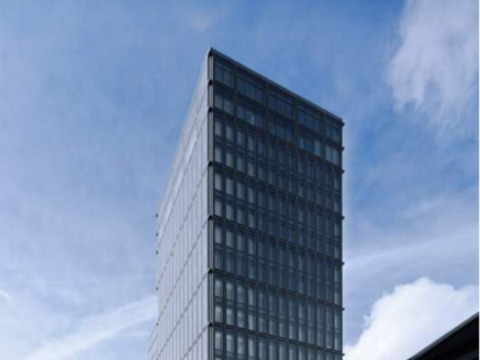MAX DUDLER : the power of emptiness
January 30, 2012
The season of the important conferences for the Twentieth Anniversary of the Faculty of Architecture of Ferrara has started again with a Lectio Magistralis by Max Dudler, attesting, as underlined by Professor Daniele Pini, introducing the guest, the centrality, here in Ferrara, of the architectonical theme, not only pursued at a didactic level, but also as an actual social heritage.
The Honorary Degree to protagonists of the international scene, like Peter Zumthor and Santiago Calatrava, is a clear index of that. Daniele Pini in his introduction focuses on the theme of the project, which, seen at 360°, is the only tool able to bring the next generations out of the present crisis.
It is in this picture that the work of Max Dudler puts itself as a vital element of renewal, thanks to its approach based on the spatial work, considered like the construction of the site, both as shape and as part of the culture system.
The recognisability of an architecture is in fact a sign of belonging to a social and cultural background; and in Dudler’s work this element brings back to the point of the architect’s responsibility “because it is towards the society that the planner acts and builds a real ethical and political dimension”.
Andrea Rinaldi continues with an important critical presentation approaching the points concerning the relation between Dudler and Ferrara “united by the constant search of a project beyond fashions”.
In fact the component element of the famous architect’s works lies in “enhancing the quality of the things inside the town without becoming an invasive sign, but focusing on the repetitive system as a perceptive quality”.
To this first factor a second one has to be added , which is characteristic of the German architect: the one of the accuracy joined to an artistic dimension of the architecture “seen as a masterly mix of materials and proportions which leads to an organized and balanced system”.
Dudler, in his brilliant speech, reminds that every day, here in Italy, when each of us crosses the threshold of one of the many historical palaces in the main city centres, he does exactly what Dudler himself tries to achieve through architecture:to keep the value and the beauty of history going. The topic of the development of the European city “is not necessarily linked to the extent and the decentralization, but to the reclaim of historical values through the public area and the recapture of the identity of spaces, which already belong to the city”.
He presents projects which are in progress or already completed , like the Konzerthalle in Reutlingen, a city which is similar to Ferrara in terms of dimension, where the project development shows clear references to other auditoriums, as the one in Wien or Munich, both for the choice of the acoustics and the use of the fine cherry wood, which implements the sound qualities of the space.
An example like this is in Zurich: a district next to the central station, where the project theme is connected to the way of referring to the typical elements of the historical cities in the Florentine Renaissance.
In this case the objective was not to create a break with the language of the existing city, developing the site functions in order to redefine the urbanity. This is why every building is in perfect tune with the context and, above all, with the public space. In fact the central area is occupied by the Faculty of Psychology, while, under the square, one of the biggest shopping centres in Switzerland has been created.
Again in Zurich, in the outskirts of the city, Dudler imagined a vertical architecture inspired to the Rockfeller Center by Raymond Hood, where several towers are put in relation, in order to define the central public area similar to a square, thanks to the use of one only material and one only size of the windows.
Towers of different dimensions which, connected, are able to produce a semantic family, creating its own identity “the repetition of the module produces and defines the space which is used then by the consumers”.
The principle of durability of architecture which, according to Dudler, is a basic element of tectonics is part of the history of European cities, as a constitutional factor. Like in the Renaissance “also Schinkel produced a new vocabulary and, in this way, my architecture tries to regain the principles of continuity that have always organized the German cities”.
Linked to the durability there is also the search of accuracy, the will, showed by Dudler, designing works, which are plain, rational and loaded with equilibrium.
At the end of the lectio magistralis Dudler specifies “I’d prefer to talk about reduction, rather than accuracy, which is a fundamental idea anyway.
It is in the study of details, in their principle of reduction that the designer can choose the elements able to give sense to his architecture creating new spaces for the city.
Today the architecture is no longer sovereign and noisy, but it forms an essential element for the people’s life and what I call “reduction” is the extent which gives to the architecture the strength of changing and becoming liveable to people”.
back to top print
Post-it
ISSN 2239-6063
edited by
Alfonso Acocella
redazione materialdesign@unife.it




















